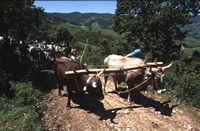
The Maggio Festival of Accettura is a folk festival, known for its popular character. It represents a unicum at European level for the syncretism of its popular and picturesque characters.
Accettura was founded between the fourth and tenth century, during the Longobard domination, or, more likely, at the end of the social wars, during the 1st century BC. after Silla's victory over the previous Lucan settlement. The feast is thought to be linked to these origins.
The massive woodland of the landscape in which the population lives is the natural and human scenery of the festival, which is celebrated during Pentecost. It has a double value: religious and pagan.
Regarding the religious aspect, the festival is held in honor of St. Julian, even if its anniversary is January 27, so it is always a party of nature. The feast begins in the morning, in the wood of Gallipoli, where landowners and peasants are concentrated in cutting the Cima.
The”Cima” is the crown of a holly tree with a gentle aspect, which will be grafted in Accettura at the top of the May tree. It is carried on shoulder by Gallipoli Cognato by men helped by particular bifurcated sticks called crocks, set up by the branches of the other trees.
The descent of the Cima through the woods is accompanied by folk songs and dances. The distance between the forest of Gallipoli and the village is about 15 km, during the trip, many stops at fountains are usual. The stop last one hour and mainly serves to give rest to the “cimaioli”, that is to say the friends carrying the Cima.
The choice of the Maggio, the groom, in a wood opposite the one of the Cima, takes place in the Montepiano forest. It is the highest and straight oak in the trees. Montepiano is about 5 km from the village. The advent of the Maggio is announced by the sounding of the bells of oxen, by pipes and bagpipes.







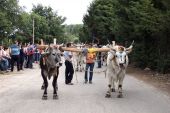
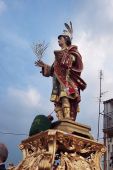


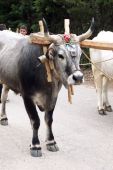
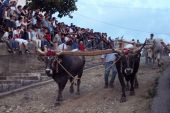
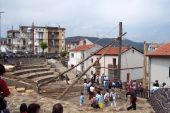
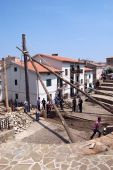







 Il presente sito si ispira alle nuove linee guida di design per i servizi web delle PA
Il presente sito si ispira alle nuove linee guida di design per i servizi web delle PA